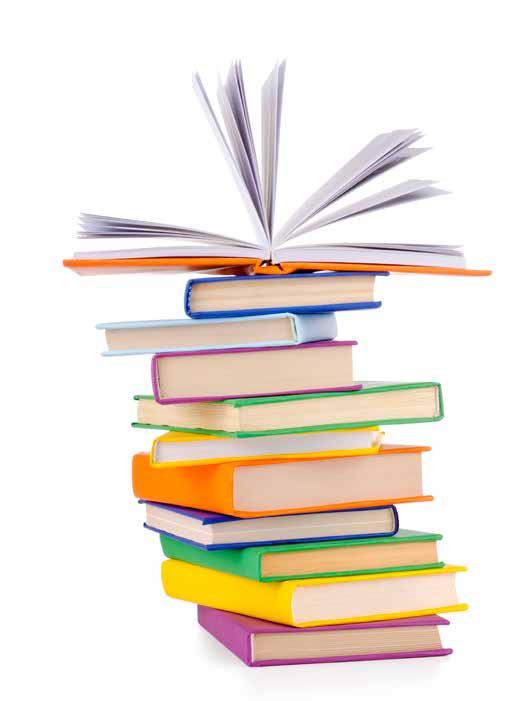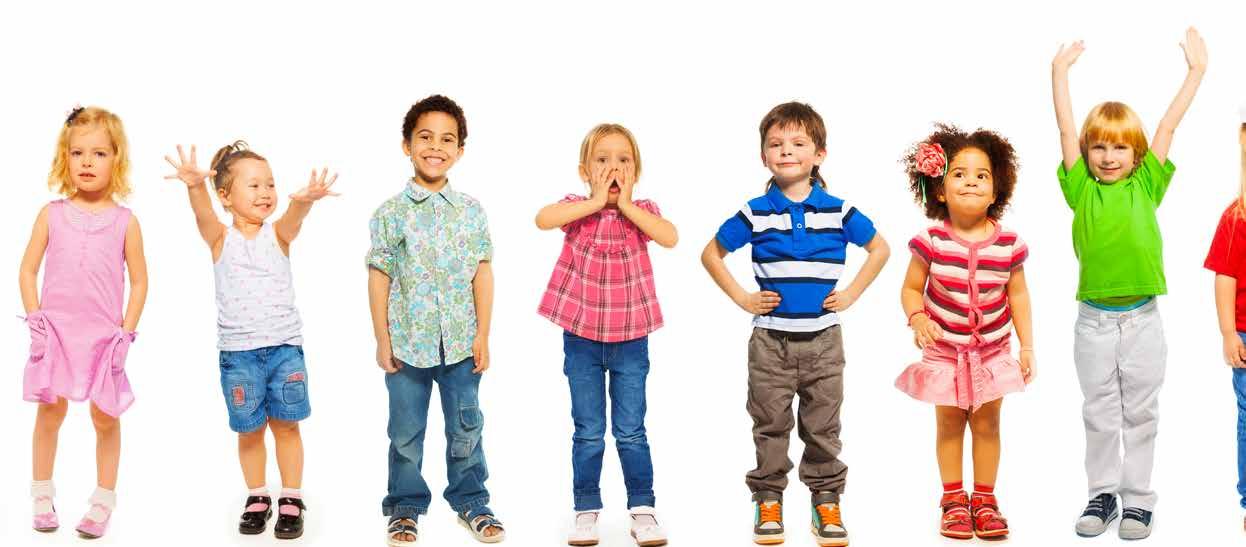
5 minute read
SIBLING BRAIN BUILDERS
SIBLING Brain Builders SCI’s Sibling Brain Builders work to use the bonds between siblings as a way to build emotional and cognitive connections in children
BY Reggie Dogan STUDER COMMUNITY INSTITUTE B uilding babies’ brains is at the forefront of Studer Community Institute’s mission to improve the quality of life for everyone in the Pensacola area.
Advertisement
While parents are the key to helping babies get the best start in life, siblings can play important roles, too. If parents are a child’s first teacher, then siblings could well be their best teacher.
What siblings learn from each other growing up has significant influence on social and emotional development as adults. SCI believes the sibling relationship is a natural place for younger children to learn, develop and grow.
Through two pilot projects called Sibling Brain Builders, SCI is bringing older sisters and brothers into the cause of helping get their younger siblings prepared and ready for school.
At Bellview Middle School, teacher Dee Wright is working with SCI to provide selected middle schoolers with books, tips and tools to take home and use with their younger siblings ages 0 to 5.
“It was easy to get involved and excited about this project because I understand the impact that siblings can have on each other,” said Wright. “Sibling Brain Builders help the older child as well as the younger one because both are learning new things and gaining new skills.”
Leading by example is a good way for one sibling to shine and for the others to emulate good behavior. When one sibling reads to another, the child reading aloud gets lots of oral practice, especially when reading fluently and with expression. Being fluent readers helps with reading speed and comprehension of the story.
Jenna Myers, 12, is a Bellview seventh grader with a month-old brother.
Jenna recalled her kindergarten teacher piqued her interest in reading, but she wished she had an older sibling who shared reading time with her. She’s excited about and eager to be a part of Sibling Brain Builders.
“It is a good idea to make sure they are prepared for kindergarten,” Jenna said. “When I first heard about it, I said, ‘Hey, that’s something I can do to help my baby brother.’ ”
Another sibling project is piloted with the media specialists and administrators at Lincoln Park, Montclair, O.J. Semmes and C.A. Weis elementary schools to encourage
students in third to fifth grades to read at home with their younger siblings.
In both projects, the older students will get credit at school for the work they do at home — and incentives to keep it up. The younger children will get more time reading with someone who loves them. It’s been shown that siblings can encourage academic success. This is due, in part, to what is referred to as the “sibling spillover effect.” An older brother or sister can act as a positive role model when they help their younger siblings read with them, help them with their homework or give them academic advice.
Older siblings also can be instrumental in the early childhood brain development of younger siblings. Every child grows at his or her own pace, but research shows that a child’s early years are the most important time for development.
Escambia County’s 2018 kindergarten readiness rate is 46 percent, which means that more than half of the nearly 3,000 kindergartners show up for school unprepared.
Kindergarten readiness is among the most important

measures of a child’s academic progress. Children who are behind in kindergarten are more likely to be behind in third-grade reading, and they rarely catch up throughout their school careers. Children need someone in their homes to be their reading and learning role models with daily practice in order to navigate successfully through beginning literacy skills.
Most programs are aimed at assisting parents to develop better guidance strategies and learning opportunities but have not directly targeted siblings. The Sibling Brain Builders is designed to encourage the sibling bonding and family connections through reading, sharing and learning.
The ultimate goal is to prepare more children for kindergarten and fulfill the mission of Studer Community Institute to improve the quality of life for everyone in this community.
Our Members Never Stop Serving, and We’re Proud to Serve Them
For those who go above and beyond, we thank you. We’re committed to our members, our employees and the communities we serve.

PROUD PARTNER
navyfederal.org
Building Good Money Habits Teaching your child about money can be simple. Turning your day-to-day activities into learning experiences is a great way to start. Whether it’s trips to the store, credit union, or even the zoo, you can use these as perfect opportunities for talking with your child about how you use money every day. Teaching these skills will help provide a foundation for a successful financial future.

Encourage your child to wait for things. Learning how to wait, your child is less likely to give in to impulse buying or quick wins, and instead they see the value in waiting for even better results down the line. 1
Give them a piggybank. A piggy bank simply gives your child a place to store coins. Your child knows exactly where to put their money, and knows that after a certain time, they can use it to spend, save, or give. Once their piggy bank fills up, you can bring them to the credit union to deposit their money into a savings account. 2
Count everything. Understanding money starts with basic counting. After all, we can’t know how much money we have if we don’t know how to count and measure it. 3
Explain how you earn money. Work can be a great opportunity to share how we do things to earn money. Your child learns that we offer value, time, and knowledge in exchange for money. Be creative when explaining your job to your child’s level, framing it in ways they can understand. 5 Introduce them to different coins. By the preschool age, most kids can sort the different coins and understand how much each one is worth. They may not be able to add them all up together just yet, but they’re not too young to learn their differences, both in appearance and worth. 4
A local Medicaid Health Plan created by doctors you know and trust.
Serving adults and children in Escambia, Okaloosa, Santa Rosa, Walton, Bay, Calhoun, Franklin, Gadsden, Gulf, Holmes, Jackson, Jefferson, Leon, Liberty, Madison, Taylor, Wakulla, and Washington Counties.

LHP1902WMA911675N

Nurses are the ones you remember











